Generative AI in Practice: Advanced Insights and Operations
Retrieval Augmented Generation RAG
Vector Search
In this lesson, we explore the concept of vectorization and its application in vector search. With the rapid advancement of foundation models and generative AI, vectorization has become a cornerstone in building sophisticated AI applications. Natural Language Processing (NLP) researchers have long focused on developing vector search systems to retrieve semantically relevant information. Let’s dive deeper into how these systems work.
What Is Vector Search?
Vector search is an advanced retrieval technique that leverages high-dimensional embeddings to identify semantically relevant data. Unlike traditional keyword-based searches, which may miss contextually similar terms, vector search transforms words or phrases into numerical vectors (or embeddings) that encapsulate their meaning. This enables a more nuanced comparison that goes beyond exact keyword matches.
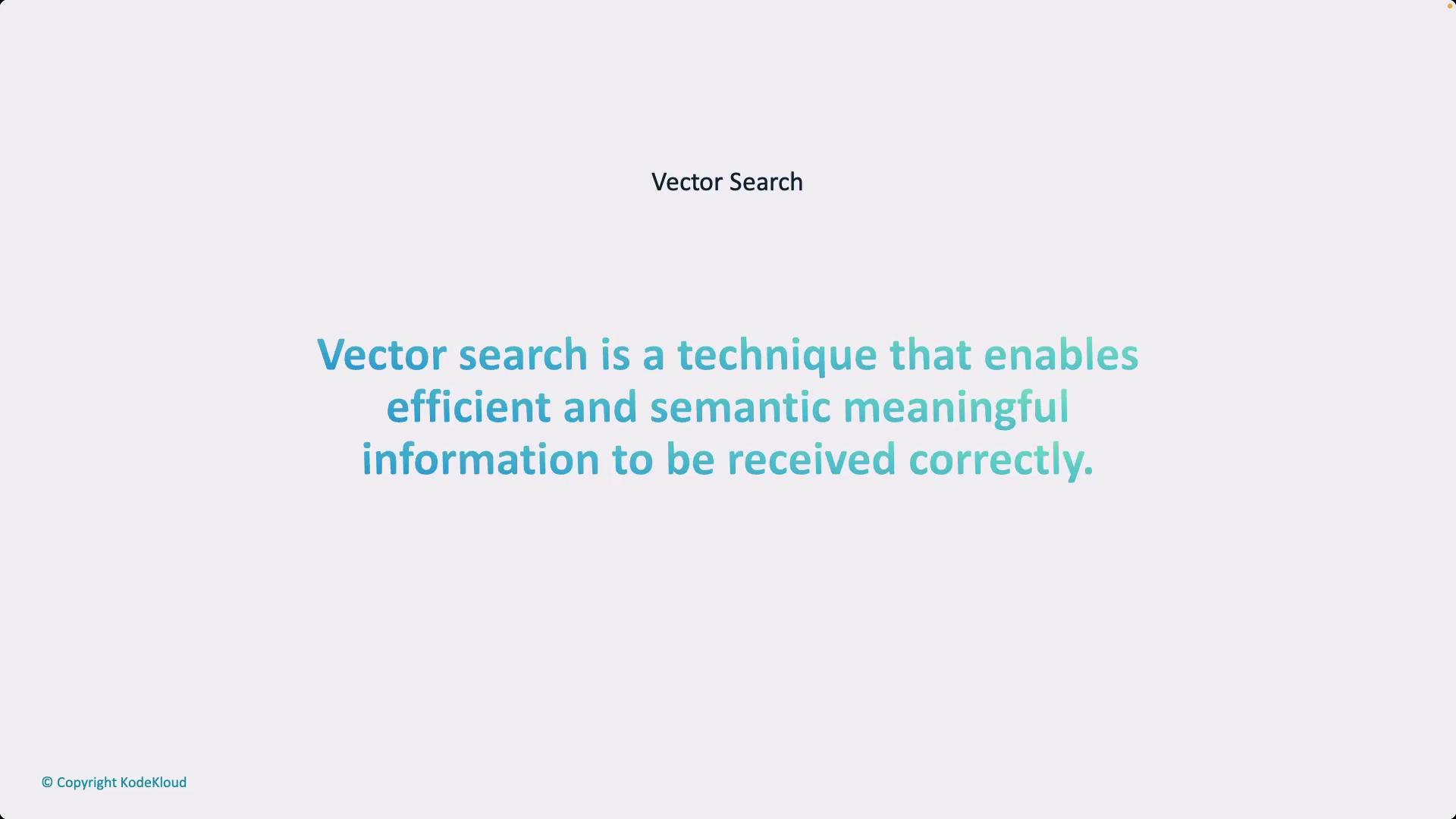
Imagine developing a search system for an insurance service provider where customers search for “car,” but many documents refer to “vehicle.” A keyword search might overlook these relevant documents. In contrast, by converting both “car” and “vehicle” into embeddings, the system recognizes their semantic similarity, ensuring no important information is missed.
Converting Text to Embeddings
To capture subtle meanings, AI models are used to transform text into embeddings—multi-dimensional numerical vectors representing the semantic content of words, sentences, or entire documents. Once converted, these embeddings allow the system to compare data points using mathematical techniques such as Euclidean distance, cosine similarity, or dot product.
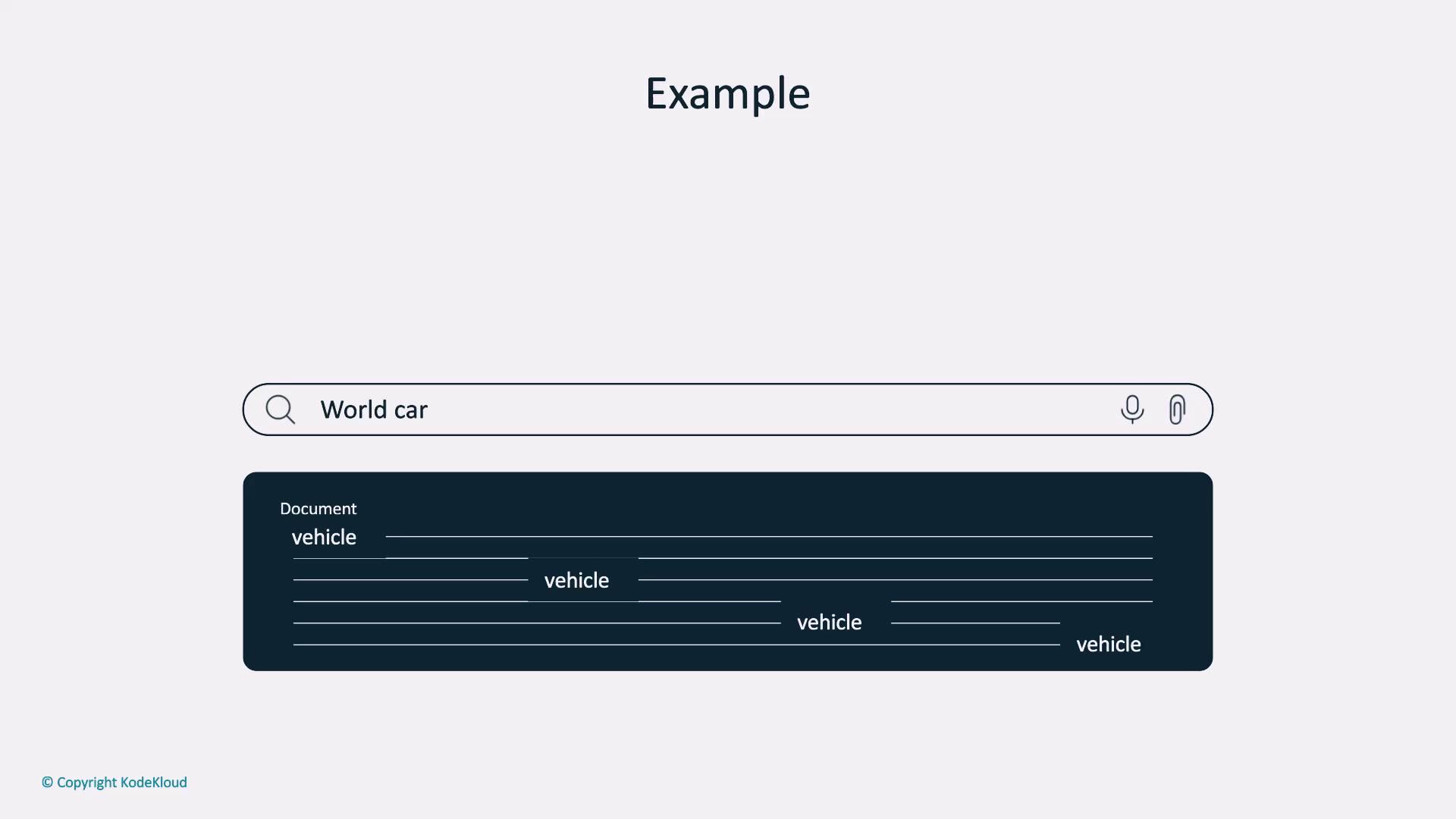
When a user enters a query, it is first transformed into an embedding. The system then calculates the distance between this query embedding and each document’s embedding. A smaller distance signifies higher semantic similarity, resulting in more accurate and contextual search results.
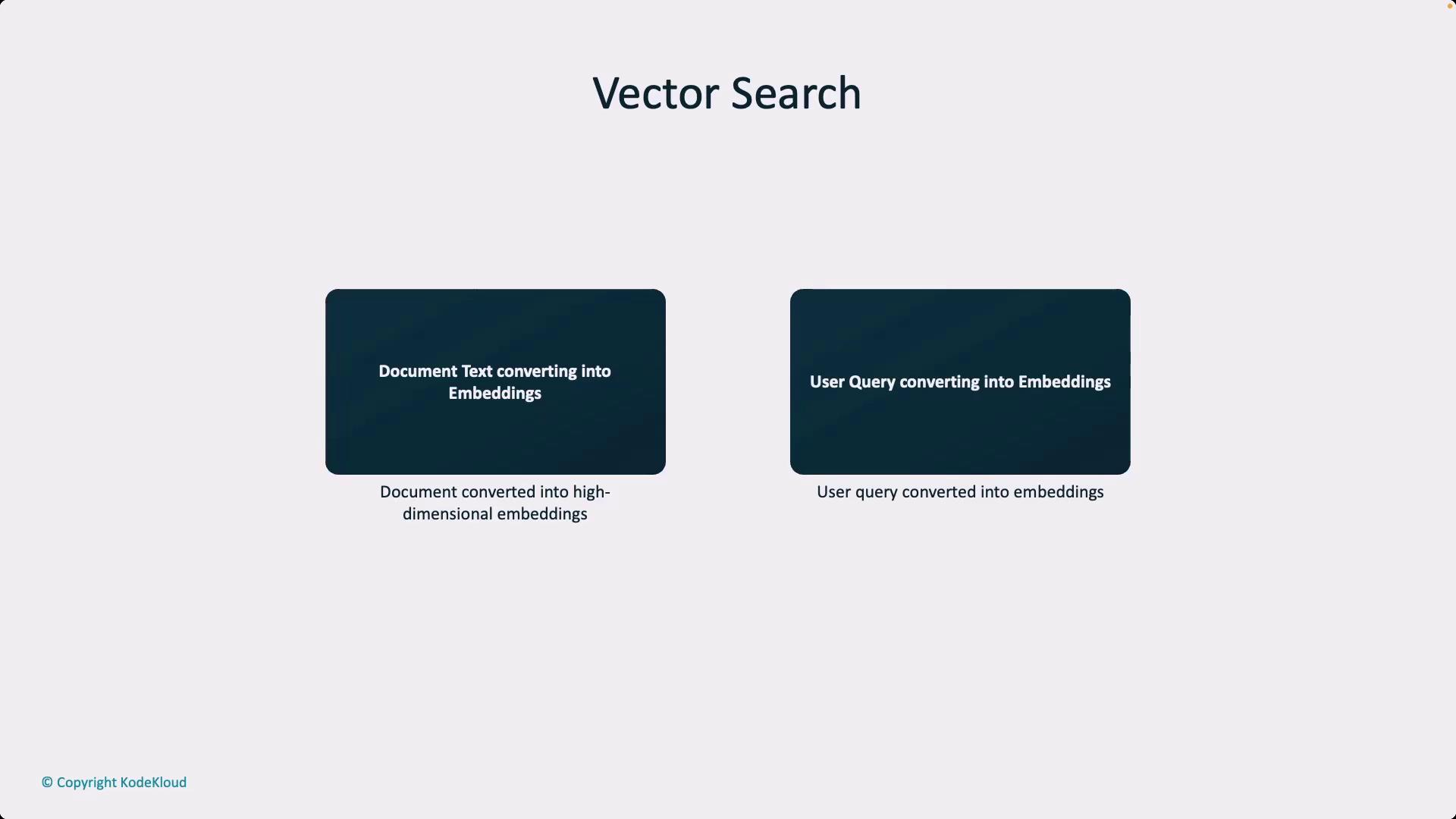
Measuring Similarity in the Vector Space
Once both the query and documents are represented as embeddings, various techniques are employed to measure their similarity. The process involves computing the "distance" between vectors—where a smaller distance indicates a higher level of similarity. This method ensures the retrieval of documents that are contextually related, even if exact keywords are not present.
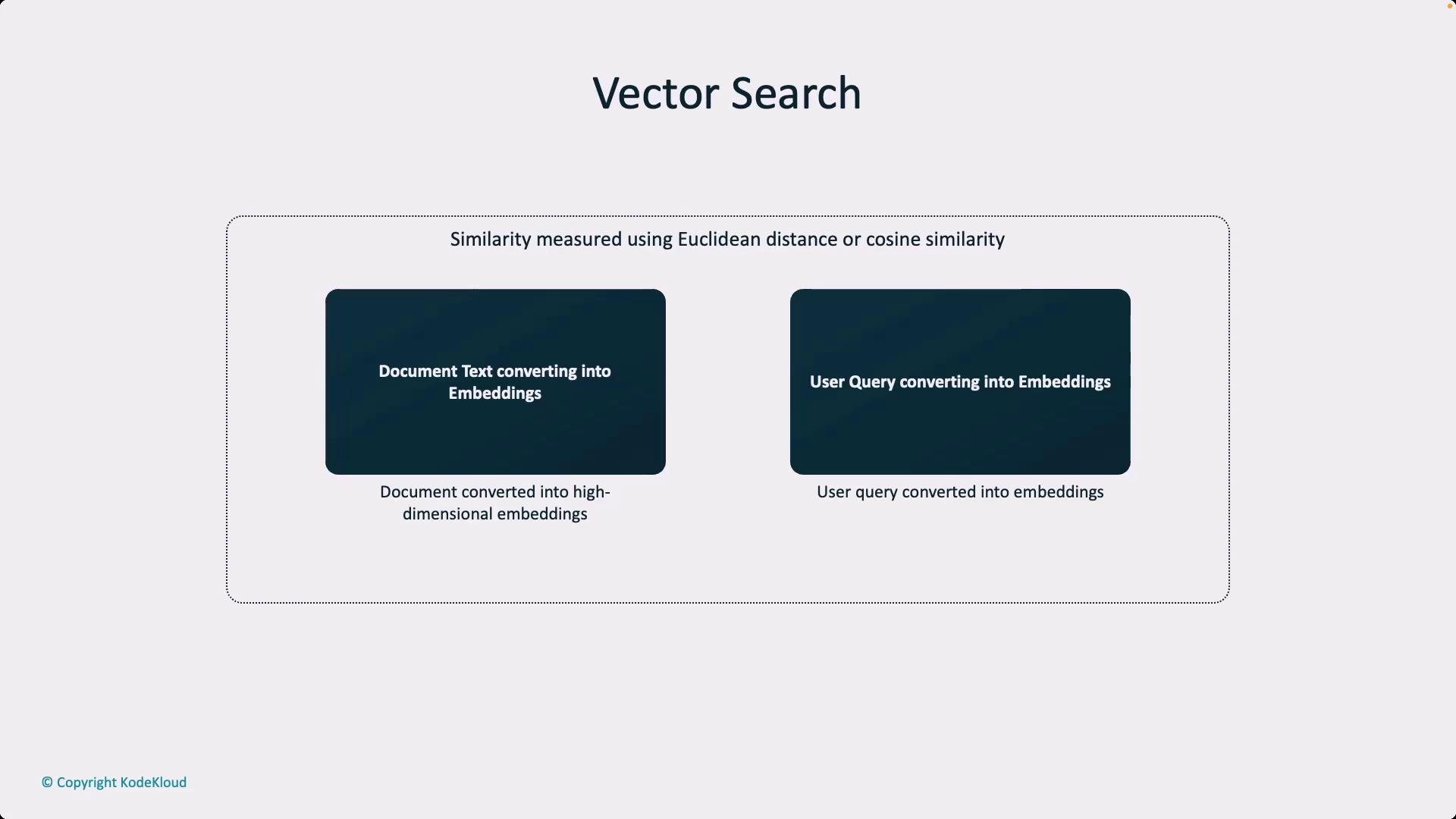
Note
Using vector-based similarity measures not only improves the recall of relevant documents but also enhances the overall search accuracy in semantic-rich environments.
Visualizing Embeddings
Visualizing embeddings often involves reducing their dimensions to two or three, revealing clusters of semantically related words. For example, words like “cat” and “kitten” may cluster closely together, as well as other related pairs like “man” and “woman.” This technique helps to highlight the underlying structure in language data.
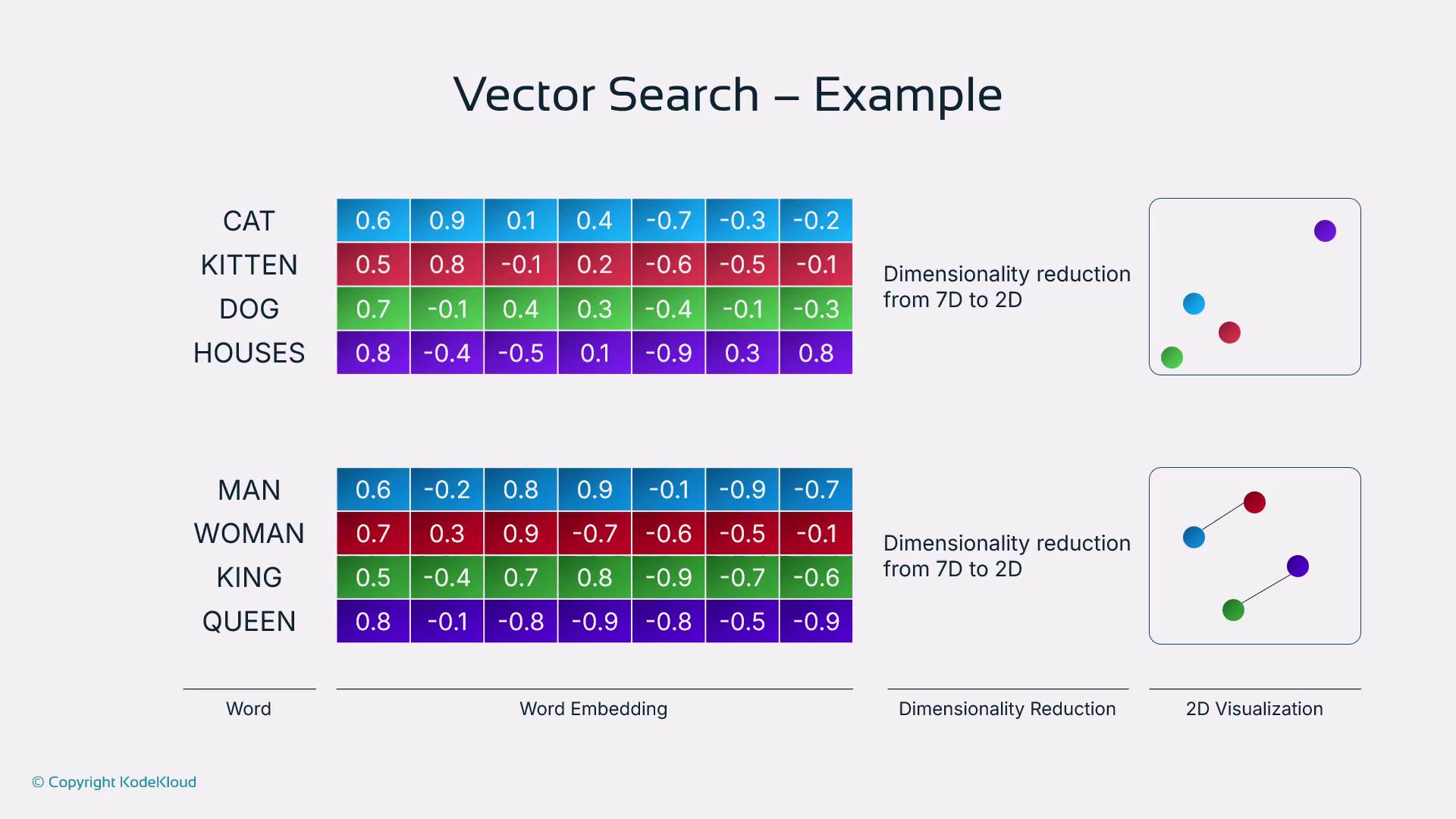
This visualization is essential for understanding how embedding models capture semantic relationships, which is a critical component in modern retrieval systems such as Retrieval Augmented Generation (RAG).
Real-World Application: Retrieval Augmented Generation (RAG)
Retrieval Augmented Generation (RAG) is a practical application of vector search. In RAG systems, the same embedding model is used to encode both documents and queries. By measuring the distance between these embeddings, the system efficiently retrieves the most relevant pieces of information, enhancing both accuracy and efficiency in real-world applications.

Note
RAG leverages the power of vector search to combine retrieval processes with generative capabilities, making it a powerful tool for developing intelligent systems.
Conclusion
Vector search harnesses the power of high-dimensional embeddings to capture the semantic nuances of text. By converting words into numerical vectors and using mathematical measures to gauge their similarity, vector search surpasses the limitations of traditional keyword methods. This advanced approach is crucial for applications like Retrieval Augmented Generation, driving innovation in AI-powered search and retrieval systems.
For further insights and updates on vector search and other AI technologies, stay tuned to our latest content.
Watch Video
Watch video content